The light from lamp posts defined civilisation, the circle beyond their glow the unknown wilds. Winter weather had stripped the leaves from the fruit trees leaving only bare branches. Short grass provided little cover for whatever was out in the cold winter night. A silent large white presence waited patiently high up in an apple tree. The tree bore the weight. In the dark, silence prevailed and the predator perched, waiting.
Into that wild dark silence blundered Ruby. I followed. It was all part of the night time ablutions for the dogs, and I’d never expected to encounter a Powerful Owl, alert for prey, way up in one of the fruit trees. The owls are noisy over the warmer months as they call to one another, alerting each to the others presence. But in winter, they’re silent and mysterious, and just as deadly.
The farm supports a huge diversity of bird and animal life. And owls rule the night air, as the Wedge Tail Eagles rule during the daylight. Some of the bird life though, I’ve introduced to the area, such as the chickens. We’ve been keeping chickens since 2010 when we unexpectedly got a call from the local breeder telling us to come and pick up the heritage variety chickens. We’d ordered them a few weeks before thinking that we’d have a few months to put together a proper hen house and attached run. But no.
We hurriedly constructed a hen house and chicken run. It wasn’t good, but neither was it entirely bad. Reading books is one way to absorb knowledge, and trial and error is a great way to put that knowledge to the test.
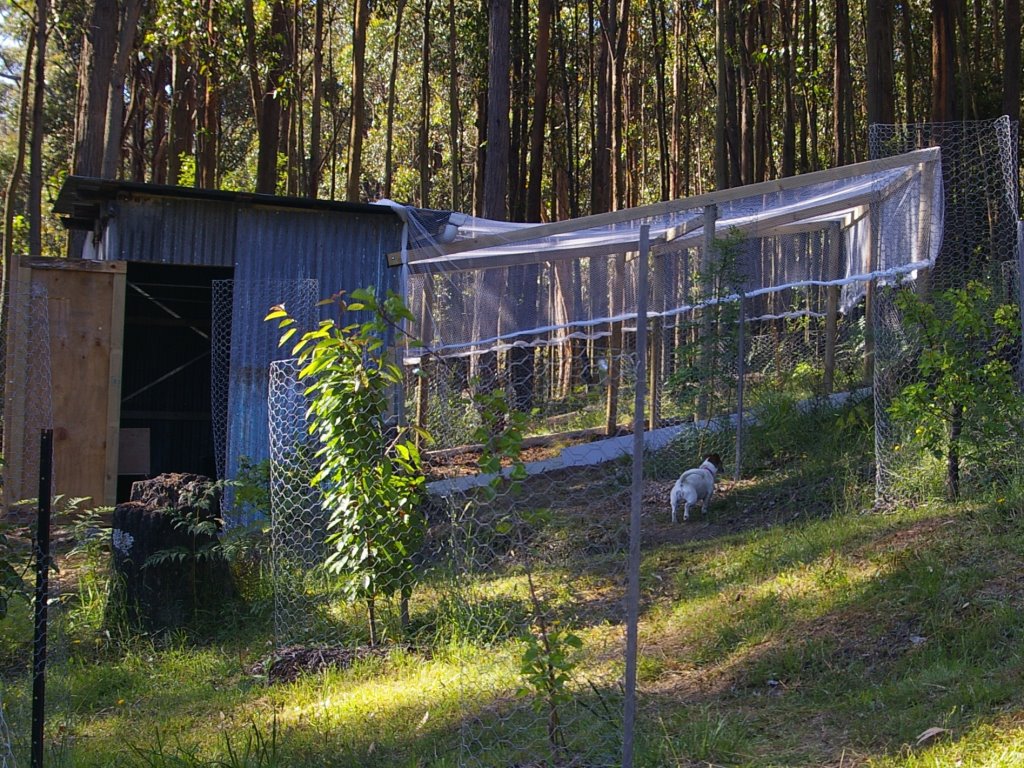
There were so many things wrong with the original chicken enclosure, but then there were a few things we did get right, so the results of the construction was something of a mixed bag. More importantly, the enclosure taught us a lot about housing and caring for chickens.
The weather can be terrible here at any time of the year, but the persistent cold and wet winter months often drives away lesser folks.
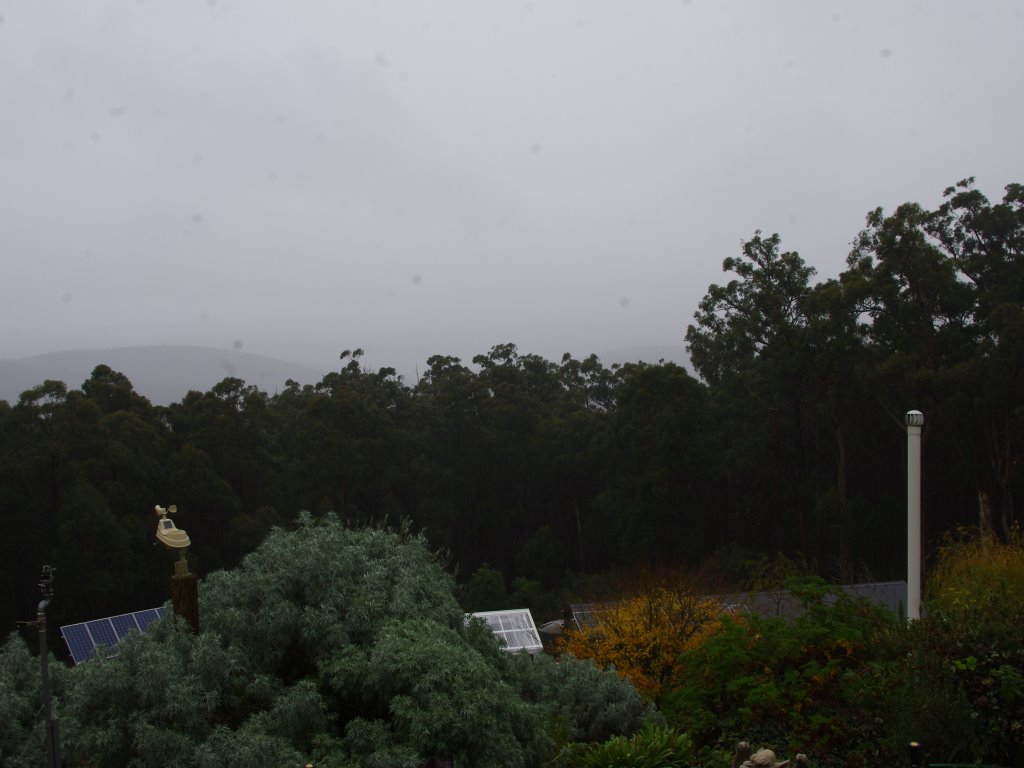
The original chicken run protected the chickens from foxes, but the run was unfortunately exposed to the weather. For many weeks during winter, the hens refused to budge from their dry hen house, and that isn’t good for their health. But in the end the deciding factor as to its fate, was the rats. Chicken wire is no hindrance to a rat. In fact the well spaced wire is like a super highway for the rodents. And we were feeding a huge population of rats. They sure can eat a lot of food. A decision was made. Four years after the initial chicken enclosure was built, we replaced it.

During the winter of 2015, we constructed a new chicken enclosure using all of the things which we’d learned from the previous incarnation. And one thing we really wanted to address was the rats. The amount of effort we put into the thwarting the cheeky scamps was extraordinary. There are concrete trenches, super strong welded mesh steel and other intriguing adaptions.
Seven years on, and the pesky rodents had found every vulnerability. Maybe a month ago I’d discovered I was feeding a population of about twenty rats. And here’s where the owl comes in. We could simply lay baits for the rats, and poison them. People use poisons all the time, even people who think they’re not using poisons, they’re using them. Unfortunately, poisoning the rats would eventually mean that I’d be poisoning the owls, and I don’t want to do that.
So, over the past month or so at night, we’ve been observing how the rats enter and exit the chicken enclosure. Then I block up those exit points with heavy duty welded steel mesh. So far there have been thirteen modifications to the chicken enclosure, and the job is not finished.
After each modification, we observe the behaviour of the rats and how they’ve adapted to the changes. I’ve learned a thing or two about rats over the past month. They truly are some of the greatest high-wire artists the planet has produced. They can jump from huge heights, scamper up vertical walls, squeeze into the tiniest of gaps, leap from nearby trees. The list goes on, and I’m frankly in awe of the rats.
However, I’m also sick of feeding them as they consume about 10kg / 22 pounds of grains every three weeks or so, and I don’t doubt that they’ve been consuming fruit from the trees when in season. As part of the observation process I’ve been scaring the rats and observing how they exit the chicken enclosure. Dame Plum – the awesome – waits on the outside of the chicken enclosure and she has been killing the exiting rats and leaving the carcasses for the owls. Everyone wins, except for the rats, they’re not doing so great now. The tally so far is: two for me; and fourteen for Dame Plum. But I reckon there are a couple of rats still to go, and the chicken enclosure is not yet rat proof, and it is very possible that it never will be. But I’m gonna make it hard for them.
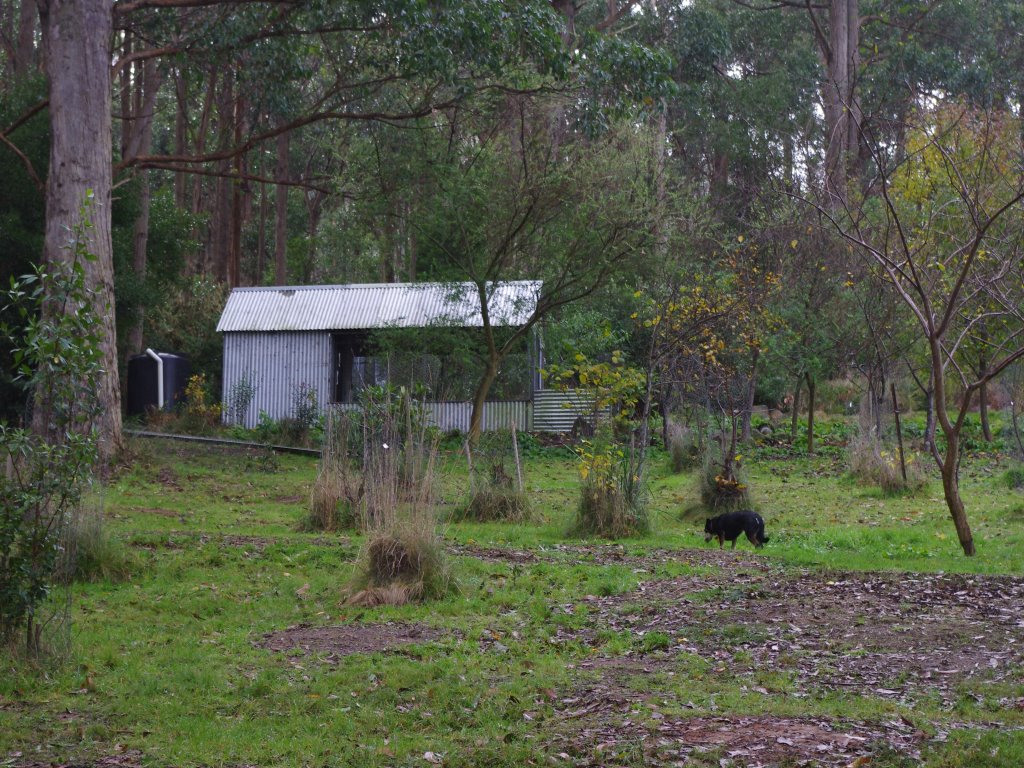
Long term readers will know by now that if infrastructure here doesn’t work well enough, it gets replaced. For the past month or so, we’ve been working on replacing the old small greenhouse, with a new and much larger version. Over the past week, the order for the steel ridge and edge capping arrived at the local hardware store. We picked up the steel, installed the other half of the polycarbonate roof sheets (only one half had been previously installed) and added the steel. Did I mention the steel capping had been ordered in a white colour so as to match the visible frame? I reckon it looks great.

In the greenhouse, because the roof and walls are transparent, we’ve had to be super careful so that all aspects of the building look neat and lined up.
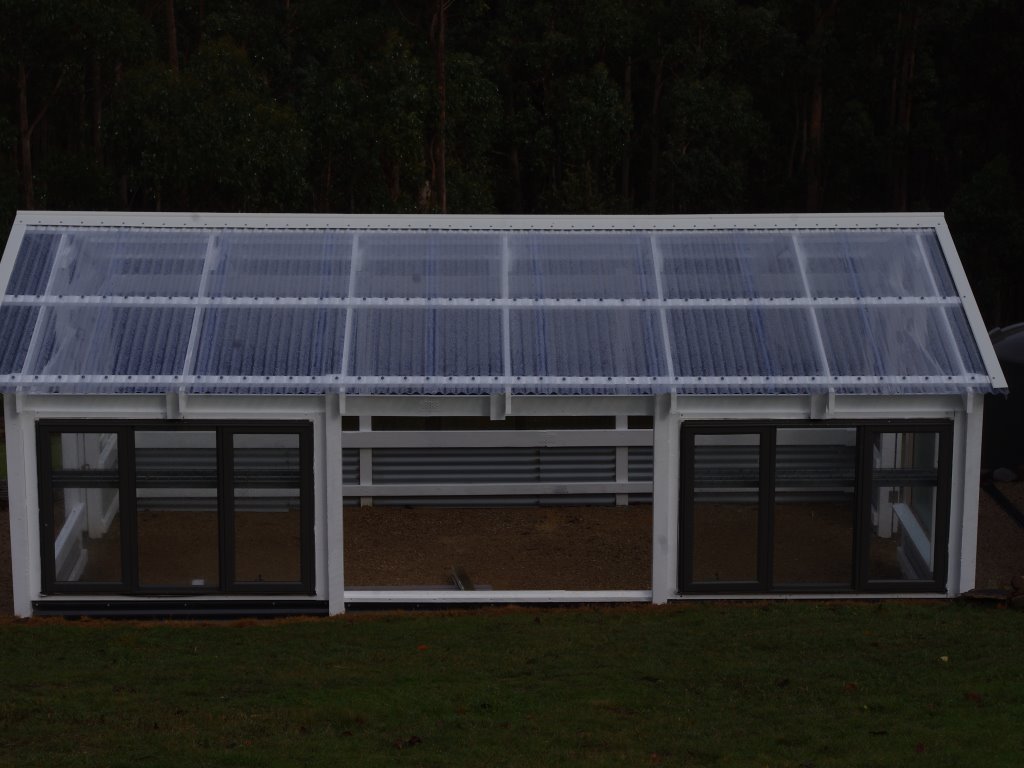
Unlike the chicken enclosure which is located so as to shade it from the summer sun, the greenhouse does not sit alone. It forms another part of an area of the farm set aside for infrastructure, and it’s part of getting all that stuff here working just right.

The recent rains have been a good test for the drainage systems in that area. A ground storm water drain channel has worked far better than we’d expected.
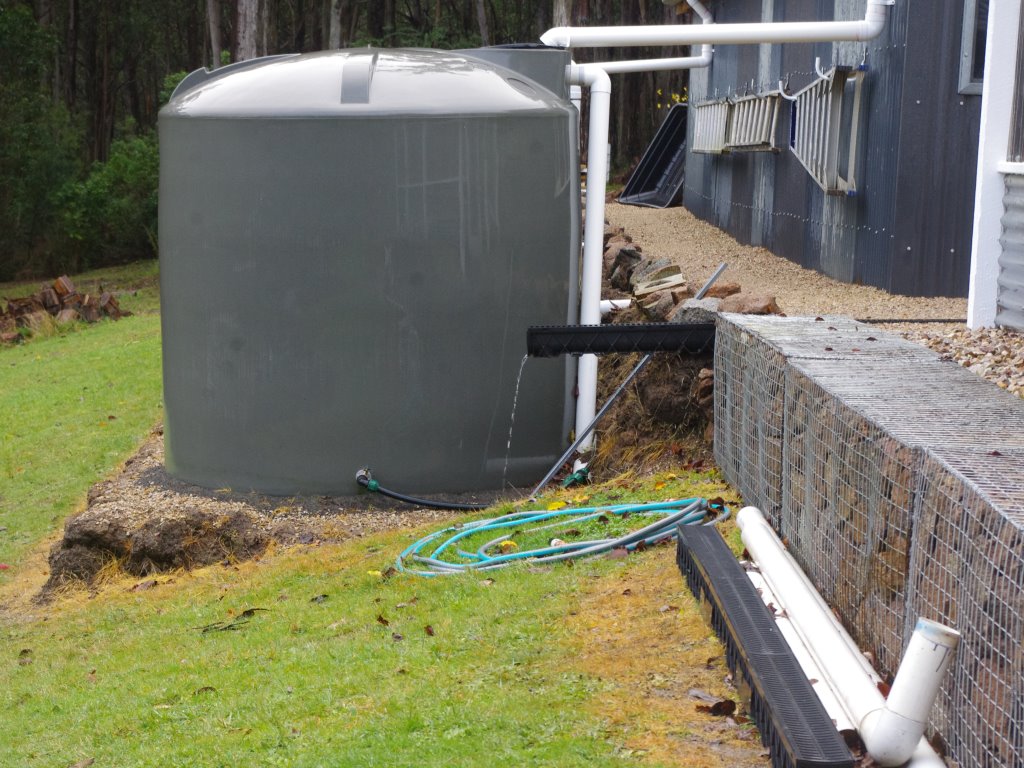
Regular readers will recall that last week we milled up some scrap hardwood timber for use in the repairs of a pair of garden bench seats. This week, we used the shelter of the greenhouse (it had been raining heavily), to repair both garden bench seats. And one of the bench seats is so comfortable that it has volunteered to spend the rest of its days in the greenhouse. I have visions of sitting on the bench seat and enjoying a good book, but first there is the little matter of the other work to be done.
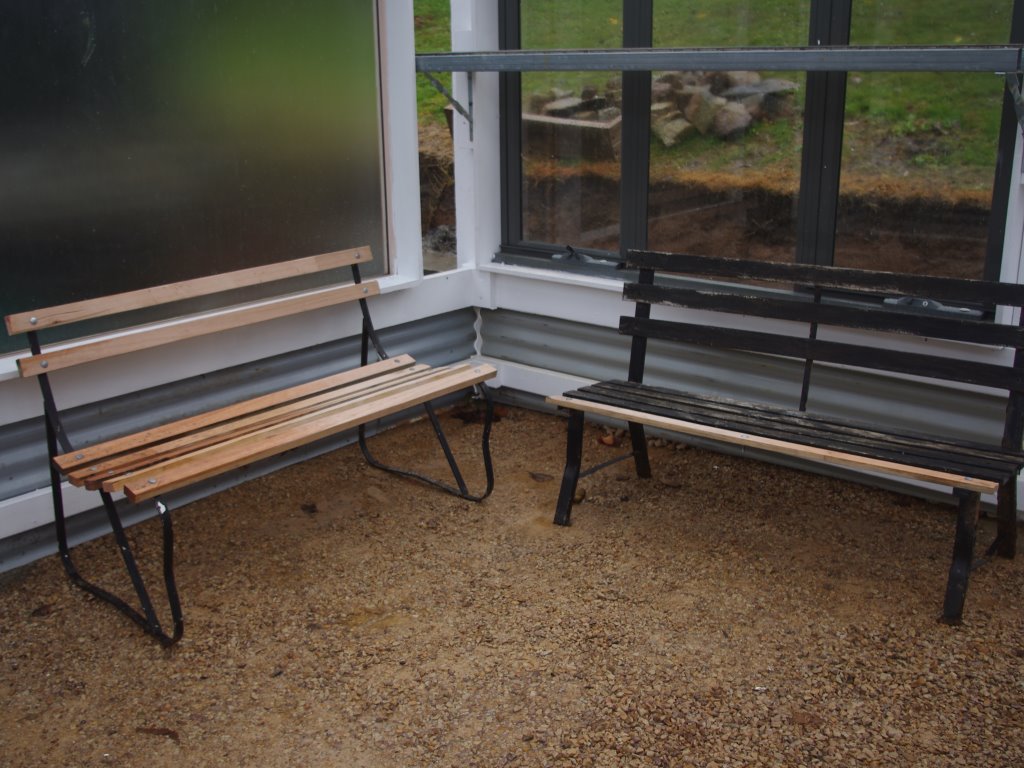
Every month or so, some burly Samoan dudes work at the farm. I’ve known them for a decade and they’re lovely folks. A few days ago they helped me clean up some more of the mess the loggers had left behind. I really don’t know what the loggers were thinking, but possibly: Don’t worry about the mess, this’ll be cheap. Of course this is part of the reason the land was cheap to purchase all those years ago.
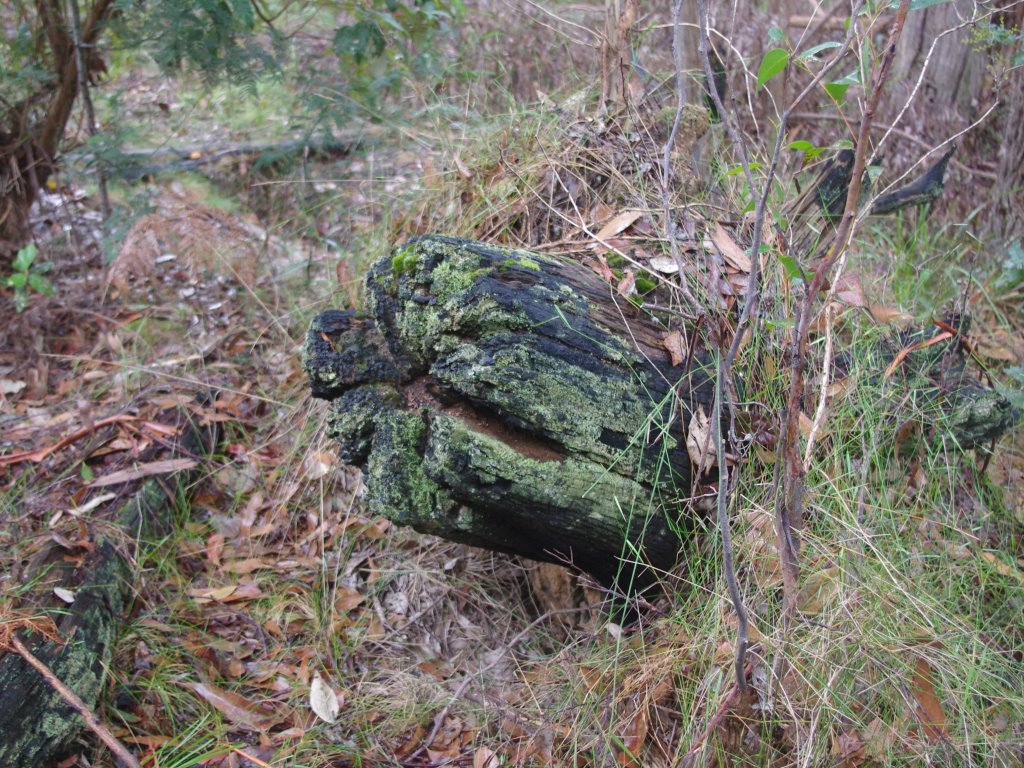
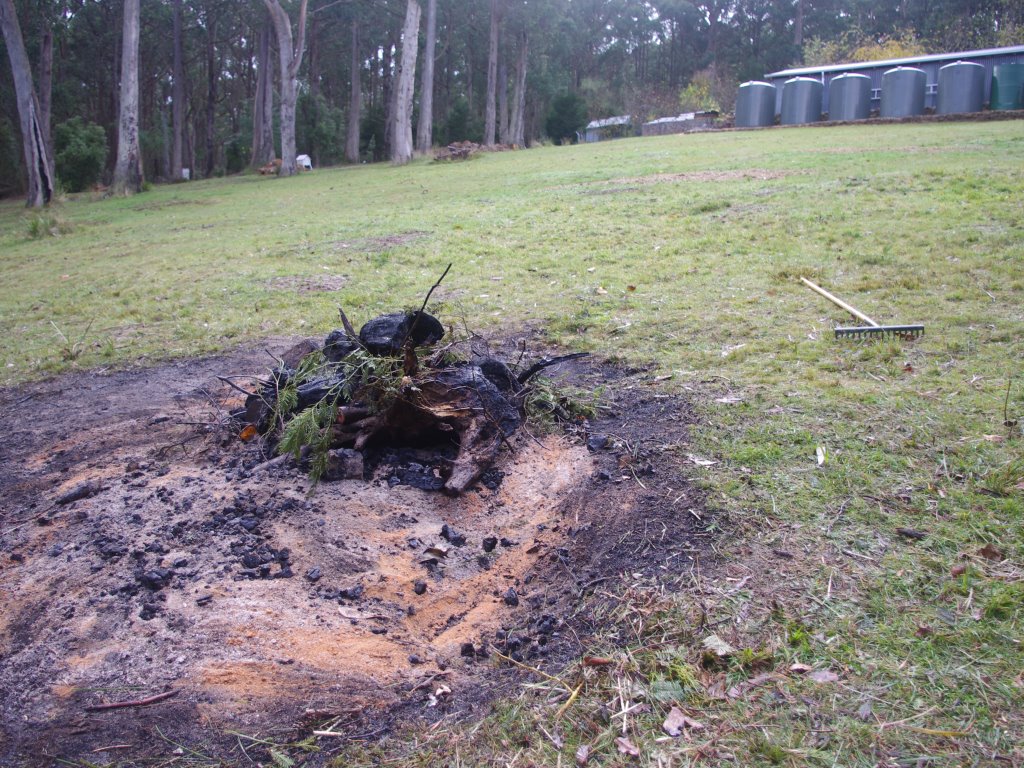
The land here contains a few mysteries, one of which were two stone rings set on contour not far apart from the other. We’ve now repaired both stone rings, and a few years back, one was filled with good soil into which we planted an oak tree. It seems to be growing very well.

A number of holes in the paddock were recently filled with soil excavated from the greenhouse cutting. Soiled chicken straw and litter was placed over the top of the fresh soil, and now the grass has germinated and has begun to grow. Grass is one of the fastest growing plants, and over time the diversity of plants in the paddock increases – but here, you have to begin repairs with grass.

Did I mention it has been very cold and wet this week? Ruby seems to think so anyway, and she has re-discovered the joys of the wood heater.
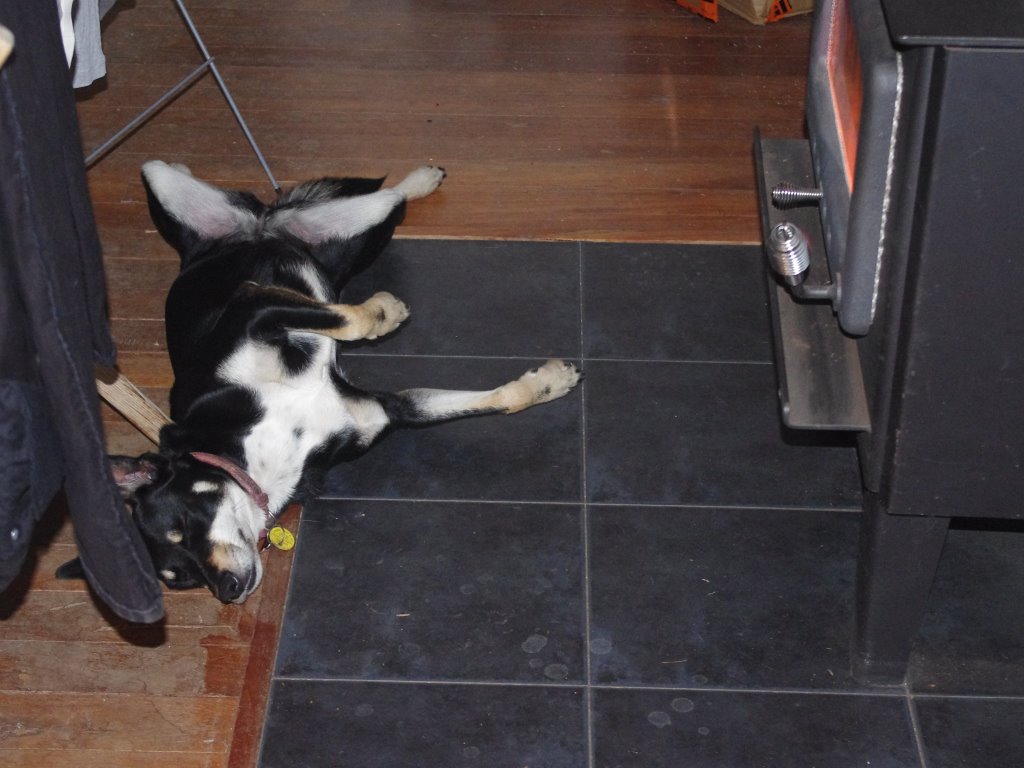
And serious people tell me that the local over story Eucalyptus Obliqua trees require fire to germinate. That ain’t necessarily so.

It’s mushroom season too. All very deadly for humans, except the local wildlife eats them.
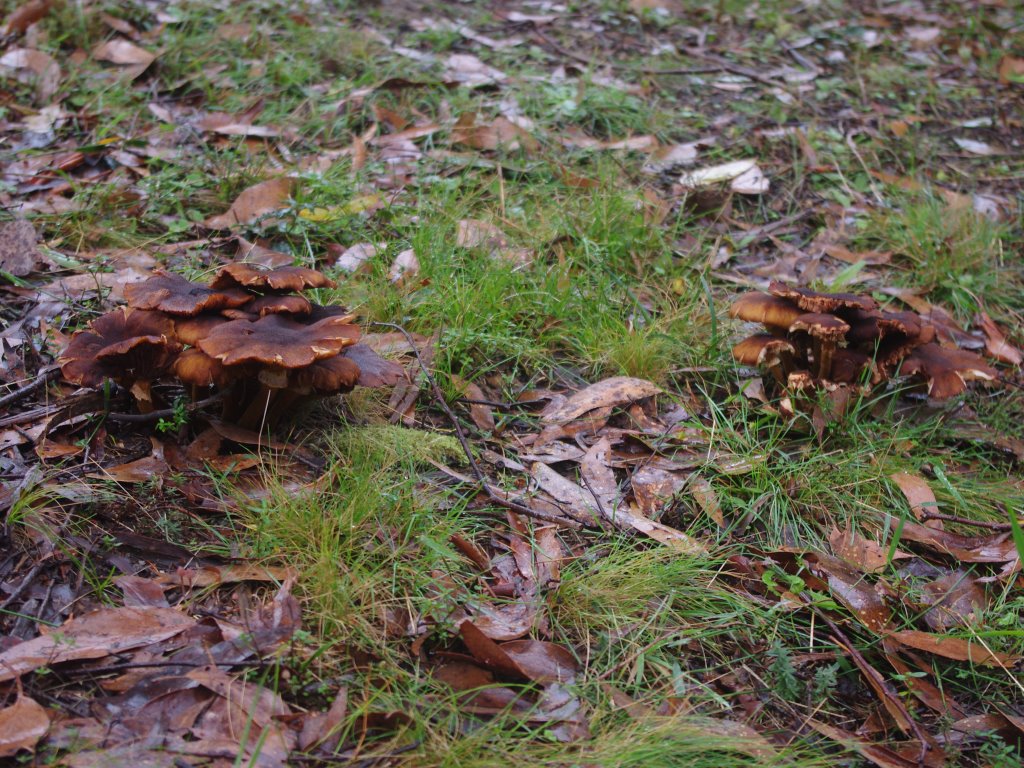

Onto the flowers:


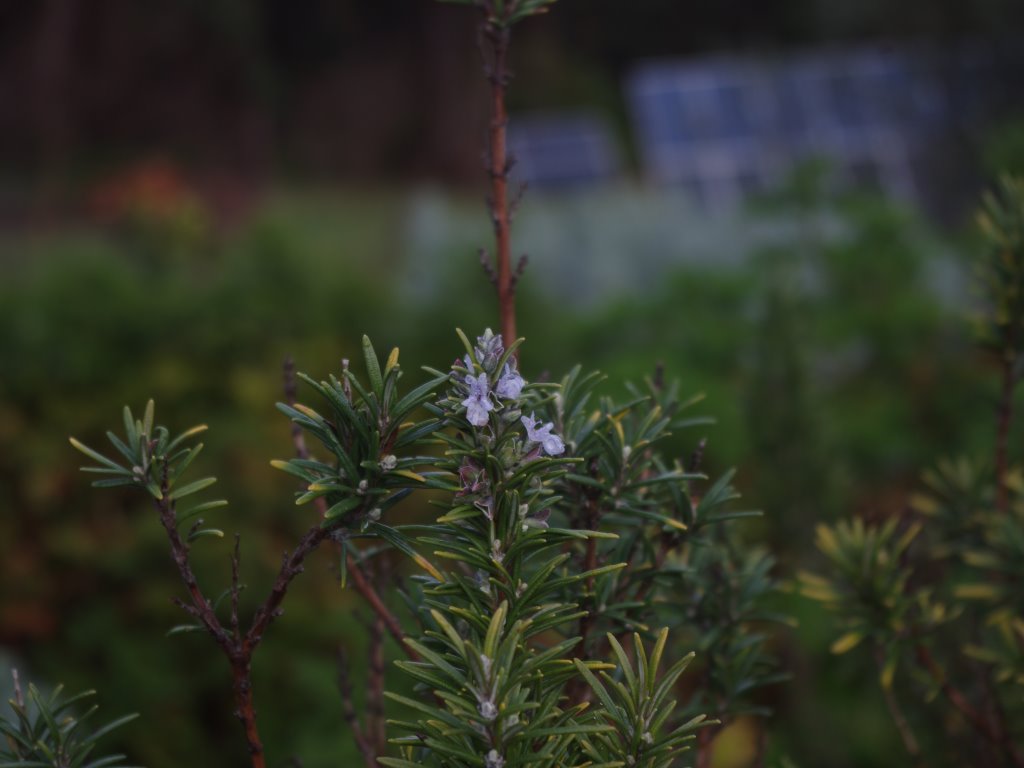
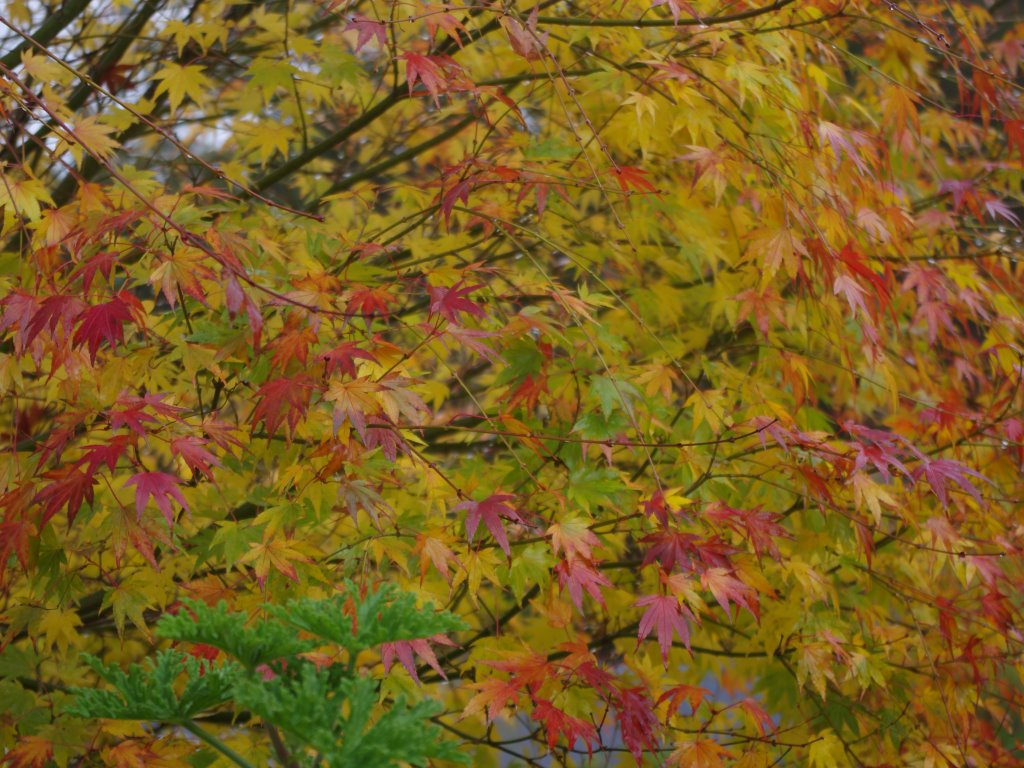
The temperature outside now at about 10.00am is 5’C (41’F). So far this year there has been 453.2mm (17.8 inches) which is up from last weeks total of 392.2mm (15.4 inches)
